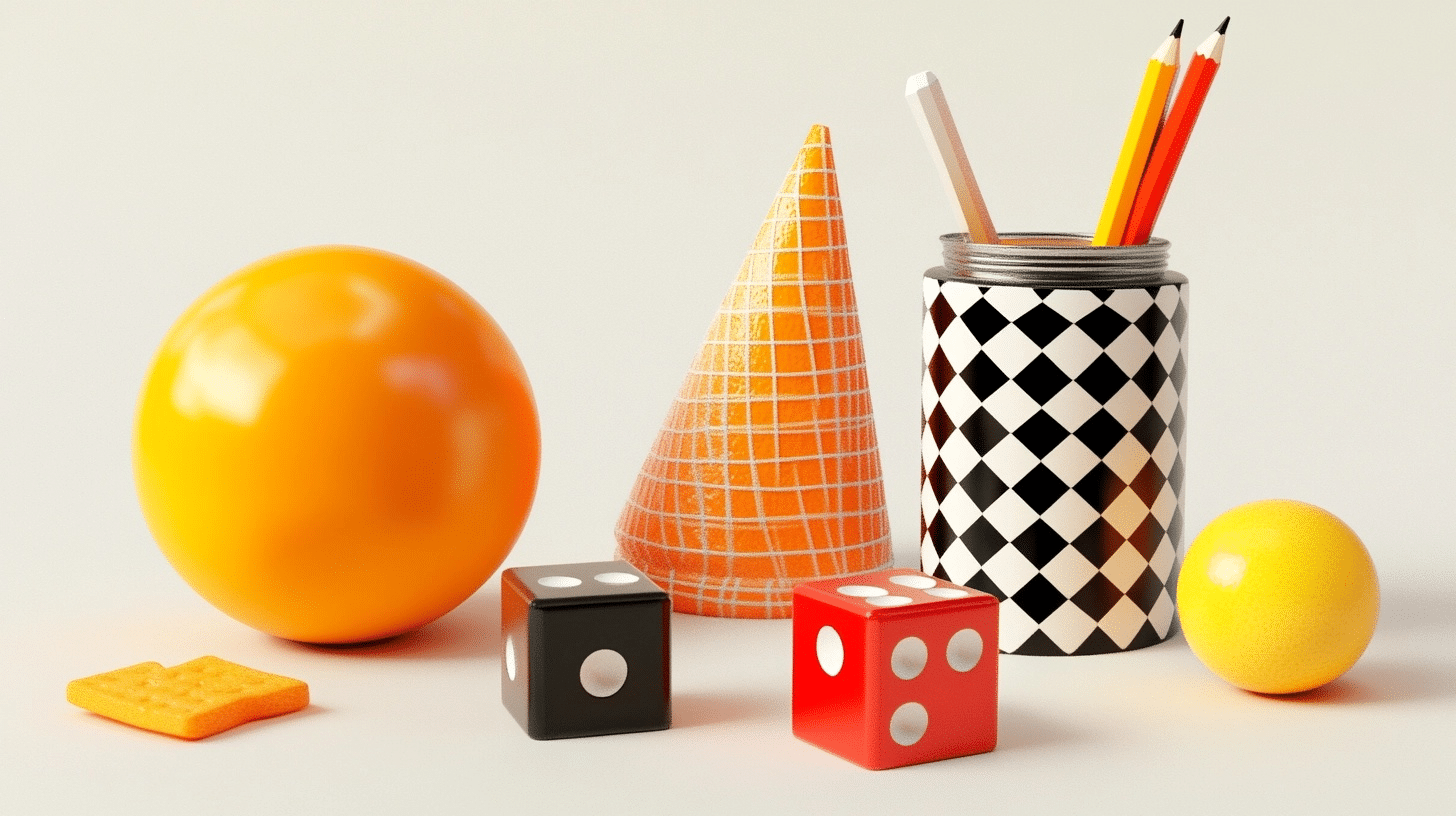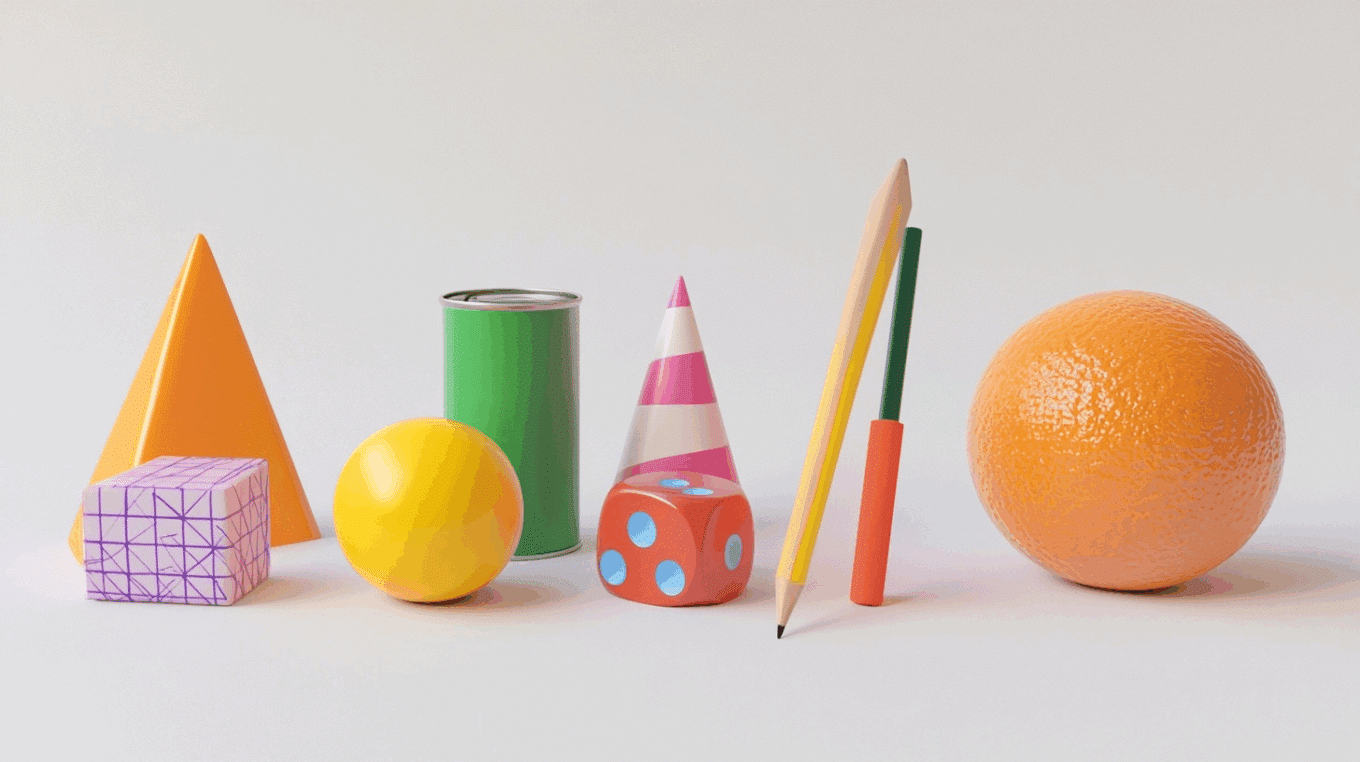Teaching 3D shapes to little ones can feel like a puzzle.
Many teachers and parents wonder if kindergartners will truly grasp these shapes beyond just memorizing names.
Kids naturally love to touch, build, and play with objects of all shapes. This hands-on curiosity makes learning about cubes, spheres, and cylinders much easier than you might think.
Ready to make 3D shapes come alive for your kindergartners? Keep reading for simple yet powerful ways to teach these concepts.
Why Understanding 3D Shapes is Essential for Early Learning?
Learning about 3D shapes helps young children develop critical thinking skills that extend far beyond math class.
When kids study cubes and spheres, they develop spatial reasoning abilities that support reading, science, and art learning.
These shape skills help children understand how objects fit together in space. They learn to compare sizes and recognize patterns in their world.
Early shape recognition connects to later geometry concepts in elementary school.
Children who master basic 3D shapes show stronger performance in construction play, drawing skills, and following directions. This foundation supports confident learning across all subject areas.
The Core 3D Shapes Every Kindergarten Child Should Know

Young children start their shape journey with a few basic 3D forms. These building blocks of geometry appear in their toys, snacks, and the world around them.
- Cube: A box with six equal square sides. Children find cubes in blocks, dice, and sugar cubes.
- Sphere: A round ball shape that rolls in any direction. Kids see spheres in balls, marbles, and oranges.
- Cone: A pointy shape with a round bottom. Ice cream cones, party hats, and traffic cones show this shape daily.
- Cylinder: A tube shape with two flat circular ends. Kids often use cylinders, such as paper towel rolls, cans, and markers.
- Pyramid: A shape with a flat bottom and sides that meet at a point. Children might spot pyramids in certain toys or buildings in books.
When teachers help students spot these shapes in the classroom and at home, learning sticks better. A child who knows a soup can is a cylinder has taken an important step in connecting math to real life.
Interactive Activities to Make 3D Shapes Kindergarten Learning Fun!

The most effective way for kindergartners to learn 3D shapes is through play and hands-on activities. When children can see, touch, and create with shapes, the concepts stick in their minds.
Playful Classroom Activities
These classroom games turn shape recognition into exciting play experiences that keep young learners engaged.
Sensory Bins with Hidden Shapes: Teachers fill bins with rice, beans, or sand and hide various 3D shapes inside. Children reach in and feel around to identify cubes, spheres, and cylinders by touch alone.
Shadow and Light Play: Kids shine flashlights on blocks and balls to see how shadows change. They learn that a sphere always makes a round shadow, while a cube creates different shapes.
Shape Construction Stations: Students use toothpicks and clay to make their own cubes. They connect straws with pipe cleaners to form pyramids. Magnetic tiles snap together to create 3D structures.
Nature Shape Walk: Children spot pinecones that look like cones. They find rocks shaped like spheres. Tree trunks show cylinder shapes perfectly.
Shape Songs and Movement: Kids curl into balls to show spheres. They stand tall and straight like cylinders. Arms stretch wide to form triangular pyramid shapes.
Guess-the-Shape Mystery Bag: Teachers place one 3D shape in each fabric bag. Students reach inside and guess what shape they’re holding without looking.
Everyday Learning with Parents
Parents can turn daily routines into fun 3D shapes kindergarten learning opportunities at home.
Cooking Time: Parents point out egg shapes (spheres) and can shapes (cylinders). Ice cube trays show perfect cube examples. Orange slices reveal sphere interiors.
Bath Time Fun: Different containers hold water in cube, cylinder, and cone shapes. Kids pour water between containers and see how shapes affect the flow.
Grocery Store Hunt: Families search for sphere-shaped oranges and apples. They spot cylinder cans on shelves. Box-shaped cereal containers show cube examples.
Reading Together: Parents point out 3D shapes that kindergarten children see in picture books. Houses show cube and triangular shapes. Balls and wheels demonstrate spheres and circles.
Strengthening the Classroom-to-Home Connection
Teachers and parents can work together to make 3D shapes kindergarten learning more effective through shared activities and communication.
Weekly Shape Spotlight: Teachers send home one shape focus each week. Families hunt for that specific shape around their house and take pictures together.
Checklists and Photo Updates: Teachers send simple checklists home showing what to look for. Parents send back photos of shapes they found with their children.
Sticker Charts: Children earn stickers each time they correctly name a 3D shape. Full charts lead to special recognition and celebration.
Before and After Videos: Teachers record short videos of children identifying shapes at the start and end of units. These videos show parents exactly how much their child has learned about 3D shapes through kindergarten activities.
Mistakes to Avoid When Teaching 3D Shapes (And How to Fix Them)
Teachers and parents sometimes hit roadblocks when introducing 3D shapes to young learners. Knowing these common mistakes helps adults teach more clearly.
| Mistake | Why It Happens | Quick Fix |
|---|---|---|
| Mixing Up 2D & 3D Shapes | Circles and spheres taught together | Use real objects (e.g., balls vs. paper circles) |
| Only Using Pictures | Kids don’t get hands-on experience | Add real items like cans, boxes, and balls |
| Teaching Names Only | Kids memorize without understanding | Discuss shape features; count sides, edges, corners |
| Moving Too Fast | Too many shapes are introduced at once | Focus on one shape at a time; build deep familiarity |
When teachers avoid these mistakes, children gain a much stronger grasp of 3D shapes. They build better thinking skills and feel more confident in their math abilities.
Takeaways
Teaching 3D shapes to kindergarteners builds more than just math skills. It forms the backbone of how they see and make sense of their world.
From cubes to spheres, each shape offers fresh chances for growth in thinking, talking, and problem-solving.
Start small with one shape at a time. Watch how quickly kids begin to notice patterns and connections on their own.
Pick one activity from this guide and try it today. Your kindergartners will thank you with their smiles and growing confidence.




